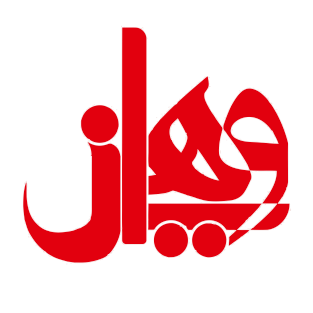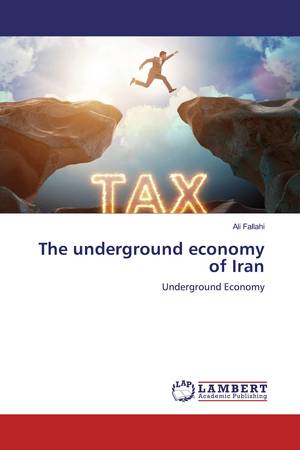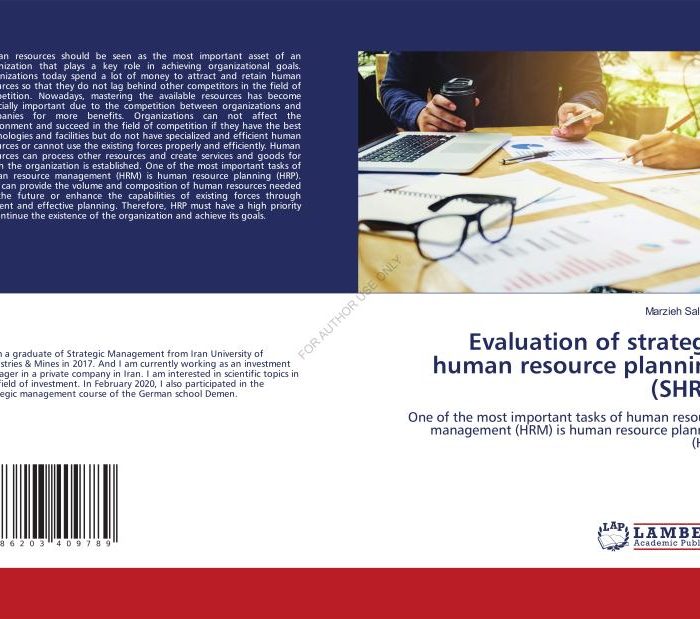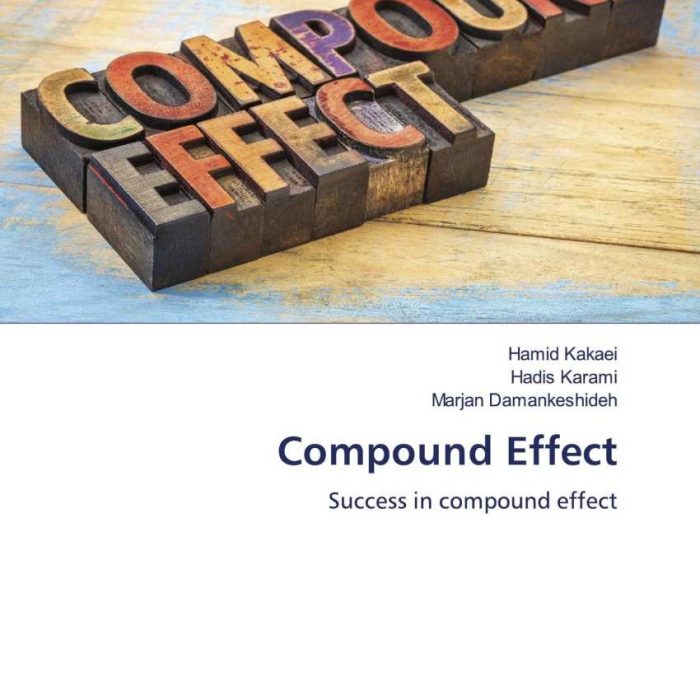کتاب Determining indicators of the underground economy in Iran
۳۱۵,۰۰۰ تومان قیمت اصلی: ۳۱۵,۰۰۰ تومان بود.۱۵۷,۵۰۰ تومانقیمت فعلی: ۱۵۷,۵۰۰ تومان.
| تعداد صفحات | 38 |
|---|---|
| شابک | 978-620-0-50363-3 |
| انتشارات |

کتاب Determining Indicators of the Underground Economy in Iran – شاخصهای اقتصاد زیرزمینی در ایران
کتاب Determining Indicators of the Underground Economy in Iran به بررسی یکی از جنبههای پنهان اقتصاد ایران میپردازد که تأثیر عمیقی بر رشد اقتصادی، سیاستگذاری و توسعه پایدار دارد. این اثر با تحلیل شاخصها، عوامل مؤثر و پیامدهای اقتصاد زیرزمینی، اطلاعاتی جامع برای پژوهشگران، سیاستگذاران و علاقهمندان به مسائل اقتصادی فراهم میکند.
درباره کتاب Determining Indicators of the Underground Economy in Iran
این کتاب بهطور خاص به شناسایی و ارزیابی شاخصهای مرتبط با اقتصاد زیرزمینی در ایران میپردازد. نویسنده با ارائه تحلیلهای دقیق و بهرهگیری از دادههای آماری، به بررسی تأثیرات اقتصاد غیررسمی بر بخشهای مختلف اقتصاد ایران پرداخته است. همچنین، راهکارهایی برای کاهش اثرات منفی و کنترل این پدیده ارائه شده است.
موضوعات کلیدی کتاب
- تعریف اقتصاد زیرزمینی: بررسی مفهوم و ویژگیهای این بخش از اقتصاد.
- شاخصهای شناسایی: معرفی و تحلیل شاخصهایی که به ارزیابی اقتصاد زیرزمینی کمک میکنند.
- عوامل مؤثر: بررسی عواملی که به رشد اقتصاد زیرزمینی در ایران دامن میزنند.
- پیامدهای اقتصادی: تحلیل اثرات این پدیده بر رشد اقتصادی، عدالت اجتماعی و سیاستگذاری.
- راهکارهای پیشنهادی: ارائه استراتژیهایی برای کاهش اقتصاد غیررسمی و تقویت اقتصاد رسمی.
ویژگیهای برجسته کتاب Determining Indicators of the Underground Economy in Iran
- تحلیل عمیق: ارائه جزئیات دقیق در مورد شاخصها و عوامل اقتصاد زیرزمینی.
- دادهمحور: استفاده از آمارهای رسمی و پژوهشهای میدانی برای بررسی موضوع.
- کاربردی برای سیاستگذاری: پیشنهاد راهکارهایی عملی برای مقابله با چالشهای مرتبط.
- مناسب برای پژوهشگران: مرجعی جامع برای تحقیق در زمینه اقتصاد زیرزمینی.
چرا کتاب Determining Indicators of the Underground Economy in Iran را بخوانید؟
اگر به موضوعات اقتصادی و بهویژه جنبههای پنهان آن علاقه دارید، این کتاب منبعی ارزشمند است. با مطالعه این اثر، میتوانید درک بهتری از اقتصاد زیرزمینی ایران پیدا کرده و راهکارهایی برای مقابله با آن بیاموزید.
مخاطبان کتاب Determining Indicators of the Underground Economy in Iran
- پژوهشگران اقتصادی: برای تحقیقات مرتبط با اقتصاد زیرزمینی و تأثیرات آن.
- سیاستگذاران و مدیران: برای طراحی سیاستهای مؤثر در مقابله با اقتصاد غیررسمی.
- دانشجویان اقتصاد: بهعنوان یک منبع علمی و تحقیقاتی.
- علاقهمندان به اقتصاد ایران: برای آشنایی با یکی از مهمترین چالشهای اقتصادی کشور.
سفارش کتاب Determining Indicators of the Underground Economy in Iran
برای تهیه کتاب Determining Indicators of the Underground Economy in Iran و استفاده از تحلیلهای جامع آن در زمینه اقتصاد زیرزمینی، به بخش فروشگاه سایت مراجعه کنید یا با ما تماس بگیرید. این کتاب راهنمایی ارزشمند برای درک بهتر و مقابله با چالشهای این بخش از اقتصاد است.
📘 پرسش و پاسخ درباره کتاب Determining Indicators of the Underground Economy in Iran
🔹 بخش اول: معرفی و مفاهیم اولیه
❓ ۱. مفهوم “اقتصاد زیرزمینی” در کتاب به چه معناست؟
🔹 اقتصاد زیرزمینی به بخشهای اقتصادی گفته میشود که در خارج از نظارت دولت و بدون ثبت قانونی فعالیت میکنند. این بخش شامل فعالیتهایی است که به دلیل غیرقانونی بودن یا نداشتن مقررات دولتی از دید دولت پنهان میماند.
❓ ۲. چرا اقتصاد زیرزمینی در ایران رشد کرده است؟
🔹 عوامل مختلفی مانند عدم کارایی سیستمهای دولتی، پیچیدگی قوانین مالی، و همچنین بیاعتمادی مردم به سیستمهای مالی رسمی باعث رشد اقتصاد زیرزمینی در ایران شده است. به علاوه، مسائل اجتماعی و اقتصادی مانند بیکاری نیز میتواند به این رشد دامن بزند.
🔹 بخش دوم: علل و پیامدهای اقتصاد زیرزمینی
❓ ۳. انگیزههای رشد بخش زیرزمینی در اقتصاد ایران چیست؟
🔹 انگیزههای مختلفی برای رشد اقتصاد زیرزمینی وجود دارد، از جمله مالیاتهای سنگین، پیچیدگیهای قانونی، و عدم وجود فرصتهای شغلی در بخشهای رسمی اقتصاد. همچنین، افراد و کسبوکارها برای فرار از نظارت دولتی و قوانین دشوار، به سمت فعالیتهای غیررسمی میروند.
❓ ۴. پیامدهای اقتصاد زیرزمینی برای جامعه و اقتصاد ایران چیست؟
🔹 پیامدهای منفی اقتصاد زیرزمینی شامل کاهش درآمدهای مالیاتی دولت، تضعیف نظم و انضباط اقتصادی، ایجاد نابرابری اقتصادی و اجتماعی، و آسیب به بخشهای رسمی بازار کار است. این وضعیت همچنین میتواند منجر به تقویت فساد و نهادینه شدن اقتصاد غیررسمی شود.
🔹 بخش سوم: عوامل تأثیرگذار و روشهای اندازهگیری
❓ ۵. عوامل مؤثر بر اقتصاد زیرزمینی در ایران کدامند؟
🔹 برخی از عوامل مؤثر شامل مشکلات اقتصادی همچون بیکاری و فقر، فساد سیستماتیک، نقص در ساختارهای مالی و حقوقی، و ضعف در نظارت دولتی است. این عوامل به رشد و گسترش بخش زیرزمینی کمک میکنند.
❓ ۶. روشهای مورد استفاده برای اندازهگیری اقتصاد زیرزمینی چیست؟
🔹 برای اندازهگیری اقتصاد زیرزمینی از روشهایی مانند روشهای آماری، مدلهای اقتصادسنجی، و بررسی دادههای مختلف مانند نرخ بیکاری، تورم، و درآمدهای مالیاتی استفاده میشود. این روشها میتوانند به تخمین حجم بخش غیررسمی اقتصاد کمک کنند.
🔹 بخش چهارم: مطالعات تجربی و تحقیقات مرتبط
❓ ۷. مطالعات تجربی انجام شده در این کتاب شامل چه مواردی است؟
🔹 در کتاب به بررسی مطالعات تجربی مختلف پرداخته شده است که در آنها اندازهگیریها و نتایج به دست آمده از تحقیقات مختلف در زمینه اقتصاد زیرزمینی ایران بررسی شده است. این مطالعات عمدتاً بر اساس دادههای اقتصادی و مالی از بخشهای رسمی و غیررسمی انجام شدهاند.
❓ ۸. جدول 1 در کتاب به چه چیزی اشاره دارد؟
🔹 جدول 1 به طبقهبندی فعالیتهای اقتصادی اشاره دارد که در آن، فعالیتهای رسمی و غیررسمی اقتصاد ایران از یکدیگر تفکیک شدهاند. این جدول کمک میکند تا تفاوتها و مرزهای میان بخشهای مختلف اقتصاد بهتر شناخته شوند.
🔹 بخش پنجم: منابع و نتایج کلیدی
❓ ۹. نتیجهگیری کتاب در مورد اقتصاد زیرزمینی ایران چیست؟
🔹 نتیجهگیری کتاب این است که اقتصاد زیرزمینی به دلیل عوامل مختلفی مانند ضعف نظارت و قوانین ناکارآمد رشد کرده است. این وضعیت نیازمند اصلاحات اساسی در سیاستهای اقتصادی، بهبود زیرساختهای نظارتی و تقویت سیستمهای مالیاتی رسمی است تا بتوان اقتصاد زیرزمینی را کنترل و کاهش داد.
❓ ۱۰. منابع مورد استفاده در کتاب برای تحلیل اقتصاد زیرزمینی چه منابعی هستند؟
🔹 منابع کتاب شامل مقالات علمی، گزارشهای اقتصادی، و مطالعات تجربی انجام شده توسط محققان داخلی و بینالمللی در زمینه اقتصاد زیرزمینی است. این منابع برای تحلیل و ارائه راهکارهای مناسب جهت مقابله با این پدیده استفاده شدهاند.
📌 نکات کلیدی:
- اقتصاد زیرزمینی در ایران به دلایل مختلفی نظیر بیکاری، فساد، و پیچیدگیهای قانونی گسترش یافته است.
- پیامدهای منفی این بخش غیررسمی شامل کاهش درآمدهای مالیاتی و تضعیف ساختارهای رسمی اقتصادی است.
- برای مقابله با اقتصاد زیرزمینی نیاز به اصلاحات قانونی، نظارتی و مالیاتی داریم.
| تعداد صفحات | 38 |
|---|---|
| شابک | 978-620-0-50363-3 |
| انتشارات |
محصولات مشابه
-
کتاب Evaluation of strategic human resource planning (SHRP)
۴۳۶,۵۰۰ تومانقیمت اصلی: ۴۳۶,۵۰۰ تومان بود.۱۷۳,۱۴۵ تومانقیمت فعلی: ۱۷۳,۱۴۵ تومان. -
کتاب Compound Effect
۳۱۵,۰۰۰ تومانقیمت اصلی: ۳۱۵,۰۰۰ تومان بود.۱۵۷,۵۰۰ تومانقیمت فعلی: ۱۵۷,۵۰۰ تومان. -
کتاب Cinema and Architecture
۸۱۴,۵۰۰ تومانقیمت اصلی: ۸۱۴,۵۰۰ تومان بود.۲۷۱,۵۰۰ تومانقیمت فعلی: ۲۷۱,۵۰۰ تومان. -
کتاب Principles of crisis management: Principles of crisis management in the organization and individual life
۵۸۵,۰۰۰ تومانقیمت اصلی: ۵۸۵,۰۰۰ تومان بود.۱۹۵,۰۰۰ تومانقیمت فعلی: ۱۹۵,۰۰۰ تومان.












